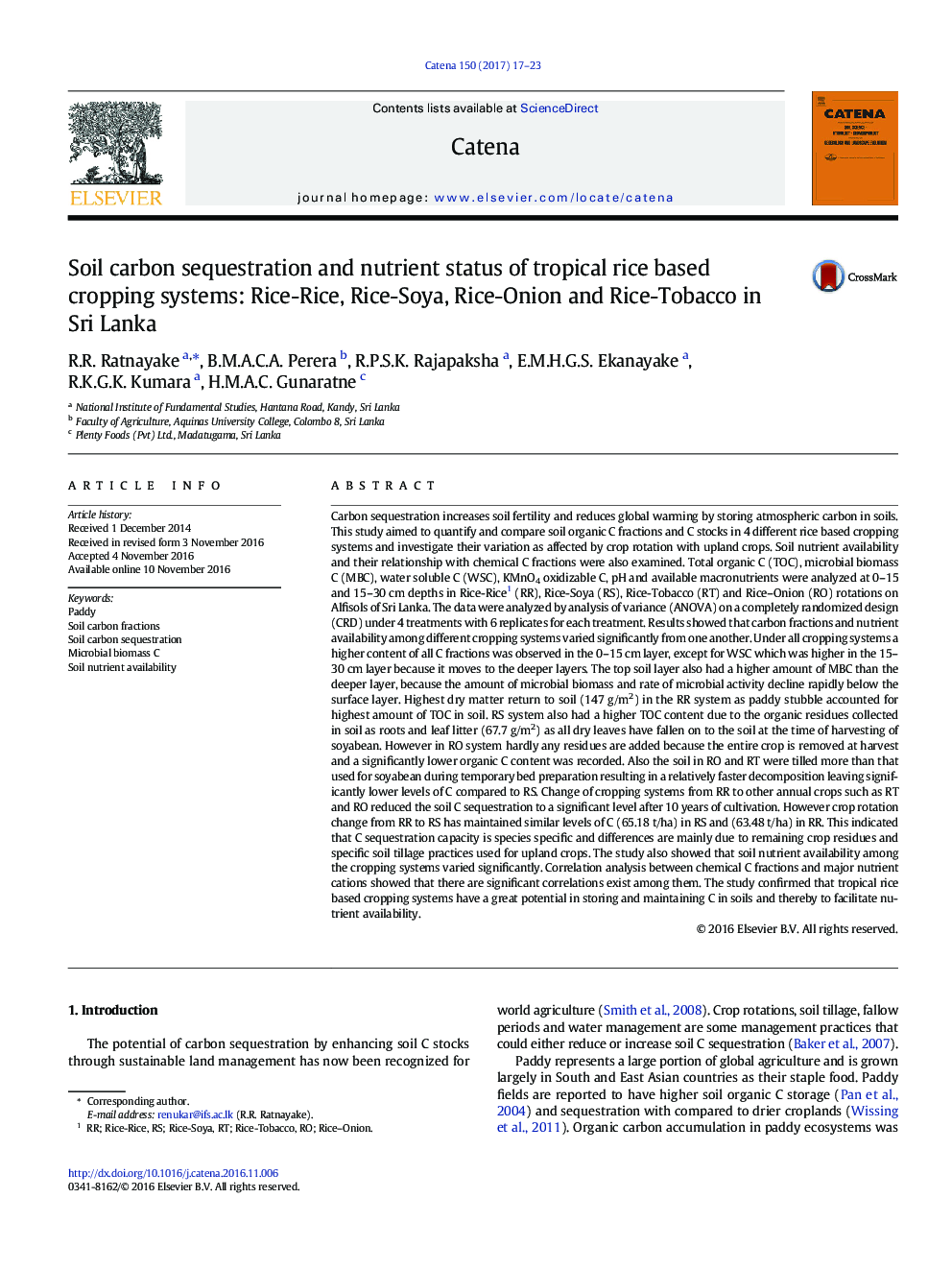| Article ID | Journal | Published Year | Pages | File Type |
|---|---|---|---|---|
| 6407626 | CATENA | 2017 | 7 Pages |
â¢Crop rotations of rice with upland crops reduced soil C stocks.â¢Organic C fractions in paddy soils facilitated nutrient availability.â¢Tropical paddy soils showed a great potential in storing atmospheric C.
Carbon sequestration increases soil fertility and reduces global warming by storing atmospheric carbon in soils. This study aimed to quantify and compare soil organic C fractions and C stocks in 4 different rice based cropping systems and investigate their variation as affected by crop rotation with upland crops. Soil nutrient availability and their relationship with chemical C fractions were also examined. Total organic C (TOC), microbial biomass C (MBC), water soluble C (WSC), KMnO4 oxidizable C, pH and available macronutrients were analyzed at 0-15 and 15-30Â cm depths in Rice-Rice1 (RR), Rice-Soya (RS), Rice-Tobacco (RT) and Rice-Onion (RO) rotations on Alfisols of Sri Lanka. The data were analyzed by analysis of variance (ANOVA) on a completely randomized design (CRD) under 4 treatments with 6 replicates for each treatment. Results showed that carbon fractions and nutrient availability among different cropping systems varied significantly from one another. Under all cropping systems a higher content of all C fractions was observed in the 0-15Â cm layer, except for WSC which was higher in the 15-30Â cm layer because it moves to the deeper layers. The top soil layer also had a higher amount of MBC than the deeper layer, because the amount of microbial biomass and rate of microbial activity decline rapidly below the surface layer. Highest dry matter return to soil (147Â g/m2) in the RR system as paddy stubble accounted for highest amount of TOC in soil. RS system also had a higher TOC content due to the organic residues collected in soil as roots and leaf litter (67.7Â g/m2) as all dry leaves have fallen on to the soil at the time of harvesting of soyabean. However in RO system hardly any residues are added because the entire crop is removed at harvest and a significantly lower organic C content was recorded. Also the soil in RO and RT were tilled more than that used for soyabean during temporary bed preparation resulting in a relatively faster decomposition leaving significantly lower levels of C compared to RS. Change of cropping systems from RR to other annual crops such as RT and RO reduced the soil C sequestration to a significant level after 10Â years of cultivation. However crop rotation change from RR to RS has maintained similar levels of C (65.18Â t/ha) in RS and (63.48Â t/ha) in RR. This indicated that C sequestration capacity is species specific and differences are mainly due to remaining crop residues and specific soil tillage practices used for upland crops. The study also showed that soil nutrient availability among the cropping systems varied significantly. Correlation analysis between chemical C fractions and major nutrient cations showed that there are significant correlations exist among them. The study confirmed that tropical rice based cropping systems have a great potential in storing and maintaining C in soils and thereby to facilitate nutrient availability.
